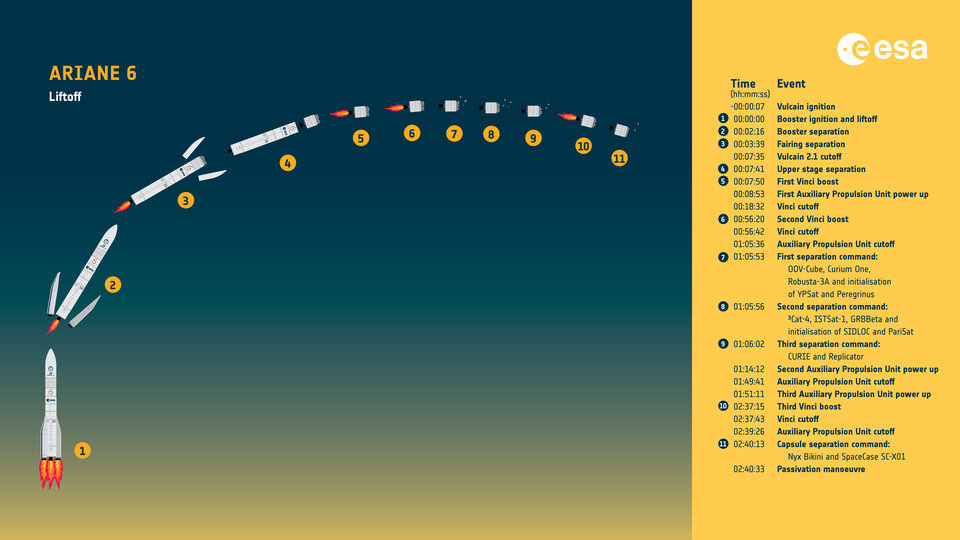How to watch 1st launch of Europe's new Ariane 6 rocket today (video)
The four-hour launch window opens at 3 p.m. ET (1900 GMT) on July 9.
Update for 11 a.m. ET: ESA is now targeting no earlier than 3 p.m. ET (1900 GMT) due to a "a small issue in the data acquisition system," the agency posted on X. Coverage begins at 2:30 p.m. ET (1830 GMT); watch it live here courtesy of ESA.
The inaugural launch of Europe's new Ariane 6 heavy-lift rocket is today, and you can watch it live.
The four-hour launch window opens at 3 p.m. ET (1900 GMT) today, July 9. Ariane 6 will lift off from Europe's Spaceport in French Guiana and exercise three phases to demonstrate its next-generation capabilities.
You can watch the entire launch live on ESAWebTV or via YouTube, with live streams available in English, French and German. Coverage begins at 2:30 p.m. EDT (1830 GMT), according to a statement from the European Space Agency (ESA).
"This is a big moment for Europe, as the rocket will ensure our guaranteed, autonomous access to space — and all of the science, Earth observation, technology development and commercial possibilities that it entails," ESA officials said in the statement. "With many features brand new to Ariane 6, we'll be able to carry more and take it further, while sustainably disposing of the launcher's upper stage to prevent it becoming space debris."
Related: Europe's new Ariane 6 rocket launching for 1st time ever this week
Ariane 6's first flight consists of three phases, starting with launching to low Earth orbit (LEO) and the separation of the rocket's main and upper stages. The first boost of the upper stage's Vinci engine will fire for about 18 minutes after liftoff.
Breaking space news, the latest updates on rocket launches, skywatching events and more!
Next, Ariane 6 will demonstrate its newest feature by reigniting its upper stage Vinci engine for the first time to bring the rocket to a circular orbit of 380 miles (580 kilometers) above Earth's surface. The rocket will then deploy eight satellites and multiple experiments, including an in-orbit 3D printing technology called Replicator.
"Re-igniting an engine in zero gravity may not sound so difficult, but as fuels float freely inside the tanks, it is not as simple as you might think," ESA officials said in the statement. "The Auxiliary Propulsion Unit (APU) helps here, providing a small but steady amount of thrust to cause fuel in the Vinci tanks to settle ensuring it can fire again."
During the third and final phase of Ariane 6's inaugural flight, the upper stage will reignite for another time after its longest down period, allowing for a controlled deorbit. At this time, two capsules will separate from the rocket and drop from orbit into the Pacific in order to test if they can re-enter Earth's atmosphere successfully. The rocket will then receive a final command that will allow it to safely burn up in the atmosphere.
In addition to watching the launch from start to finish, the live streams will also feature interviews with mission team members, who will provide insight on the rocket development and the various payloads it carries to space.

Samantha Mathewson joined Space.com as an intern in the summer of 2016. She received a B.A. in Journalism and Environmental Science at the University of New Haven, in Connecticut. Previously, her work has been published in Nature World News. When not writing or reading about science, Samantha enjoys traveling to new places and taking photos! You can follow her on Twitter @Sam_Ashley13.


